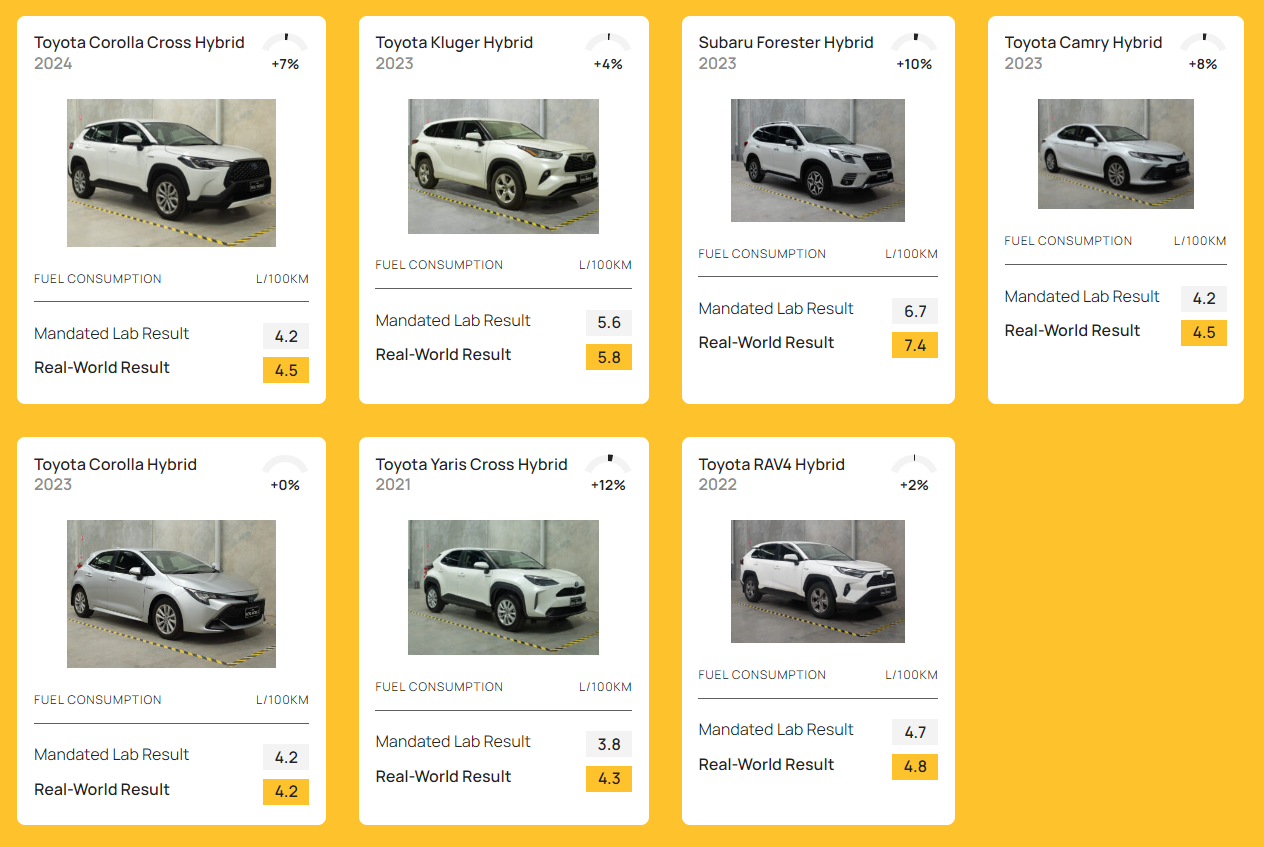Toyota hybrid consumes more than official figures

Hybrid and internal combustion engine vehicles consume up to 31 per cent more fuel than claimed in lab tests, one year of data from the Australian Automobile Association’s (AAA) Real World Testing Program has shown.
Most recently released is the third tranche of results from the program, which helps drivers understand how much they will pay for fuel based on real-world data rather than laboratory figures.
The results have the AAA questioning whether car dealers should be required to inform drivers about actual fuel consumption figures.
“The results raise a question for regulators about whether car dealerships should be required to reveal real-world testing results to consumers at point of sale,” AAA Managing Director Michael Bradley said.
Fifteen more vehicles put to the test
This latest round of testing put 15 vehicles through their paces on a 93km loop in and around Geelong, to simulate real world driving in a range of urban, rural and highway driving conditions.
At the top of the list of vehicles that used more fuel than claimed in lab test results was the Toyota Corolla Cross hybrid. According to the AAA’s real-world results, the small Japanese SUV used 7 per cent more fuel than claimed, taking its real-world fuel consumption up to 4.5 litres per 100 kilometres.
Additionally, six out of the seven hybrids tested over a year of real-world testing have shown higher fuel use than when tested in labs. These include the Toyota Kluger, the Subaru Forester, the Toyota Camry, the Toyota Yaris Cross and the Toyota RAV4 hybrids, with the Toyota Corolla hybrid hatch being the exception.

HYBRID TESTS: Hybrid test results from the AAA's Real-World Testing Program, 2023-2024
In the latest round, the Isuzu D-Max 4x4 - one of Australia’s most popular utes - followed the Toyota Corolla Cross hybrid. It used 6 per cent more fuel than lab tests claimed, putting its real-world fuel consumption at 8.5 litres per 100 kilometres. Likewise, its two-wheel drive stablemate uses 5 per cent more than claimed, according to the AAA’s real-world tests.But none tested were thirstier than the Suzuki Swift test results revealed in May, when testing revealed it used 31 per cent more fuel than claimed.
Of the 15 tested in this latest round, four used less fuel than claimed – the Hyundai Tucson, the Subaru Forester, the Kia Carnival and the Kia Sorento.
“Real-World Testing will drive down demand for models that over-promise and under-deliver, while improving affordability for Australians and cleaning up our light vehicle fleet,” Mr. Bradley said.
“Our program is also providing important data for governments as they place increasing focus on greenwashing and measures to encourage take-up of electric vehicles.’’
Noxious fumes emitted exceed Euro 5 tests
Importantly, more than a third of the 58 vehicles tested since the program began emit more noxious fumes such as nitrogen oxide (NOx), carbon monoxide (CO) and fine particulate matter (measured as PNmg/km, where PN stands for particle number) than lab test data, the AAA says.
Vehicles fuelled by diesel are the most polluting. Tests show that the Isuzu D-Max 4x4 ute emits 53 per cent more NOx than tested under the Euro 5 fuel standard, and 240 per cent more than the Euro 6 standard to be implemented on 1 December 2025.
Likewise, the diesel-powered Kia Sorento SUV was shown to emit almost twice as much NOx than lab tests, and 330 per cent more than the incoming Euro 6 standard.
“We can now say with confidence that while some vehicles produce fuel consumption and emissions in line with lab tests reported by carmakers, many do not,” said Mr. Bradley regarding the latest tests.
“That can have real impact on consumers and fleet buyers. If people rely on the lab tests, they could end up with a car that costs more to run or is dirtier than they expected.”
The $14 million program will run for four years, testing 200 cars, utes and SUVs. It is expected that electric vehicles will be included in testing in 2025. Drivers can check the results themselves at realworld.org.au.
Meanwhile, a new report Fossil Fuels are a Health Hazard was launched in Canberra on Wednesday by Doctors for the Environment finding that fossil fuel pollution is killing more people globally than smoking, and is increasing rates of heart disease, cancer and poor pregnancy outcomes. This includes fossil fuels burned in coal power stations and by petrol- and diesel-fuelled vehicles.






